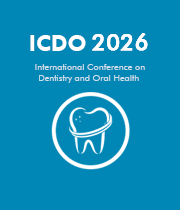Tooth Epidemiology
Tooth Epidemiology is a branch of dental science that studies the prevalence and incidence of dental and oral diseases and disorders, with the aim of helping in the prevention of dental-oral diseases and promoting good oral health and care. This branch of dental science encompasses the Epidemiology, Prevention, Diagnosis, and Management of Dental and Oral Health Issues. The primary purpose of Tooth Epidemiology is to identify and characterize the risk factors that lead to the initiation or progression of dental-oral diseases. Through the application of epidemiological principles, the goal is to provide a better understanding of the risk factors and associations at play and to identify the right strategies to reduce their impact on the population's oral health. Tooth epidemiology also seeks to assess the impact of health behaviors and other predisposing factors, like socio-economic status and lifestyle, on dental-oral health. The availability of reliable and comprehensive epidemiologic data is critical for formulating effective public policies that promote oral health and prevent dental-oral diseases. To investigate dental-oral health issues suitable epidemiologic approaches, including cross-sectional studies, case-control studies and cohort studies, are typically used. These epidemiological tools provide valuable data about the prevalence and incidence of oral diseases, and their determinants, which can be used to design more effective interventions and better manage dental-oral health. Tooth epidemiology is an integral part of preventive dentistry, and it is also deeply intertwined with dental public health. It is an essential component of the practice of dentistry in that it helps to identify the target population at risk and the preventive programs that are necessary to reduce the overall burden of dental-oral diseases. Thus Tooth Epidemiology is an essential part of preventive dentistry that studies the prevalence and incidence of dental and oral diseases and human behaviors. It is the key to the development of effective public health strategies and interventions to reduce the burden of dental-oral diseases in the population.

David Geoffrey Gillam
Queen Mary University of London, United Kingdom
Christopher Turner
Spacemark Dental, United Kingdom




Title : Evaluating hygienist follow up for head and neck oncology patients in secondary care: Results from a two cycle audit
Peter Basta, Newcastle Dental Hospital, United Kingdom
Title : Atypical facial pain unravelled
Christopher Turner, Spacemark Dental, United Kingdom
Title : New treatment of temporomandibular disorder through muscle balance and muscle regeneration by activation of quiescent muscle stem cells( satellite cells) with mitochondrial dynamics
Ki Ji Lee, National Reserach Foundation & Busan Medical University, Korea, Republic of
Title : Cutaneous, Cranial, skeletal and dental defects in patients with Goltz syndrome
Ali Al Kaissi, National Ilizarov Medical Research Center for Traumatology and Orthopaedics, Russian Federation
Title : The nature and management of dental erosion in patients with bulimia nervosa
Maya Fahy, The Royal Victoria, School of Dentistry, United Kingdom
Title : A systematic review on the early detection of oral cancer using artificial intelligence and electronic tongue technology
Maryam, Kardan Dental Clinic, Iran (Islamic Republic of)